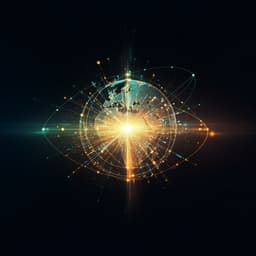
Sociology
"Our migrant" and "the other migrant": migration discourse in the Albanian media, 2015-2018
E. Dhëmbo, E. Çaro, et al.
This research conducted by Elona Dhëmbo, Erka Çaro, and Julia Hoxha investigates the narrative surrounding migration in Albanian media from 2015 to 2018. It highlights the shift of Albania’s identity in migration, focusing predominantly on emigration while revealing the distinctions made between 'our migrants' and 'the other migrants'.
~3 min • Beginner • English
Introduction
The study investigates how Albanian media portrayed migration between 2015 and 2018, a period marked by Albania’s persistent role as a sending country and its emerging position as a transit and potential destination country following Europe’s 2015 refugee crisis. Recognizing media’s agenda-setting and framing power, the paper aims to: (i) explore portrayals of migration in Albanian media, (ii) map and analyze the scope of coverage, and (iii) consider how media frames may shape public opinion in Albania. It analyzes discourse from two perspectives: Albania as an origin country and as a transit/potential host. Research questions include: how is migration covered, what is the orientation (tone) of discourse, and which frames predominate in Albanian media.
Literature Review
The review highlights that media coverage of migration is shaped by political and global events (EU expansion, Brexit, Eurozone and refugee crises) and varies across contexts. Studies show increased salience of migration in European media, with destination countries often emphasizing refugee accommodation, irregularity, and asylum issues; Central and Eastern European media more frequently stress problems and protests related to refugees. A broad literature documents predominantly negative media discourse linking migrants to crime, terrorism, cultural threat, and economic burden, often using dehumanizing metaphors and crisis language (e.g., “waves,” “floods”). Visual and textual victimization frames are common. Exposure to such narratives transcends borders, influencing public opinion even in sending/transit countries like Albania. The review also outlines key frames: security/threat (illegality, terrorism, crime; cultural threat), economic/labour (competition, welfare strain vs economic benefits/remittances), welfare (education, health care, pensions, housing), victimization, and political frames. Prior work in the Western Balkans reveals mixed patterns, with some gate countries emphasizing security threats and others showing more empathetic or mixed coverage.
Methodology
A mixed-methods media monitoring study covered 55 Albanian online media sources (websites of 15 newspapers and 8 magazines among others) yielding 317 articles, and 20 TV channels producing 61 programs, over 1 January 2015 to 31 December 2018. In the quantitative phase, items were identified using keywords (migration, emigrants, asylum seeker, refugee, return migrant, diaspora; plus immigration, remittances, repatriation). The qualitative phase involved coding original Albanian-language content in MAXQDA 2020. Synonyms and phrase combinations were developed under each keyword, coding families were created, and items were categorized by tonality (positive, negative, neutral) and by frames identified from the literature (security, economic, social/demographic, political). The analysis focused on: (a) coverage volume, (b) incidence of common codes, themes, and frames, and (c) tone. Challenges included duplicated news across outlets with slight title changes, poorly structured or incomplete online archives (especially for 2015), retrieval noise from keyword searches, and disorganized outlet structures. Extra data cleaning was conducted to mitigate these issues. The smallest unit of analysis was the article/post (Albanian language).
Key Findings
- Coverage volume and timing: Migration coverage in Albanian media rose steadily after the 2015 European refugee crisis, with a noticeable increase in 2017–2018, coinciding with a fivefold rise in irregular migrants entering Albania in 2018 vs 2017 (Xhaho & Tandili, 2019). The least intensive year was 2015.
- Dominant perspective: Coverage predominantly reflected Albania as a sending country, focusing on “our migrants” (Albanian emigrants) and issues such as remittances, demographic challenges, multiculturalism in destination societies, return and reintegration, and Albanian asylum seeking in EU countries. The regional refugee “crisis” and Albania’s role as transit/potential host received limited attention.
- Terminology: The most frequent label was “emigrant,” followed by “refugee.” Use of “emigrant” surged in 2017–2018; in 2017 it was more than double “refugee,” reflecting national concerns about out-migration. In contrast, many Western countries’ media most frequently used “refugee” or “migrant.”
- Orientation (tone): The discourse was predominantly negative, especially toward “asylum seekers” and “refugees.” Negative orientation increased in later years. Positive items mainly highlighted success stories of Albanian emigrants. Neutral tone grew in 2017–2018, particularly in coverage of foreign policy, regulations, and procedures.
- Frames over time: Four main frames—security, political, economic, social/demographic—were identified. The security frame peaked in 2016 (then dipped in 2017 and rose again in 2018, below 2016 levels). The political frame increased steadily to dominate in 2017–2018. The economic frame was prominent in 2017 (e.g., remittances). The social/demographic frame increased from 2017 to 2018 (aging, brain drain, youth emigration, education of refugee children).
- Security/crime linkages: Both “our migrants” (Albanians abroad) and “other migrants” (refugees/asylum seekers) were connected to crime and security issues; outcomes differ: for “our migrants,” coverage often stressed reputational impacts on Albanians; for “other migrants,” it risked fostering xenophobia and racism.
- Islam/Muslim portrayals: 2016 showed a sharper negative discourse toward Muslim migrants, with headlines linking refugees to terrorism and security threats, aligning with broader Islamophobic trends in European media.
- Socio-demographic and economic concerns: Media stressed population aging, low birth rates, loss of skilled workers, and the youthfulness of asylum seekers. Remittances were highlighted as economically beneficial to Albania, while refugees/asylum seekers were often framed as fiscal burdens for host countries (e.g., “Germany ‘opens the bag’: 93.6 billion Euros for refugees”).
- Supporting statistics: Albania included asylum seekers and foreign residents in official statistics in 2018 (4,386 asylum seekers; 9,090 foreign residents). In 2018, over one-third of asylum applications from enlargement countries were from Albania; applications rose 38% compared to 2008. In 2017, 58,853 Albanians acquired citizenship in Italy and Greece (Eurostat).
Discussion
The findings show that Albanian media discourse on migration is shaped primarily by internal dynamics as a sending country, which emphasizes emigrants, remittances, and demographic impacts. This orientation answers the research questions by demonstrating a predominance of negative tone toward refugees and asylum seekers, a growing political framing in later years, and sustained security framing—especially at moments of heightened regional concern (2016). The binary of “our migrant” versus “the other migrant” organizes coverage and influences how crime, economic implications, and social consequences are discussed, with reputational concerns for Albanians abroad and xenophobic risks toward incoming groups. These patterns are consistent with international research on media framing and sentiment, yet they also reflect Albania’s specific migration experience and policy context. The increasing neutral coverage of policies and procedures in 2017–2018 suggests maturing attention to regulatory environments as Albania navigates EU-related developments and potential hosting roles. Overall, the frames and tonality identified have potential implications for public opinion formation, integration prospects, and policy debates in Albania.
Conclusion
The study maps and analyzes Albanian media discourse on migration (2015–2018), showing that coverage is dominated by sending-country concerns, a generally negative tone—especially toward refugees and asylum seekers—and a salient security frame that peaks in 2016. Political frames increased to dominate in 2017–2018, while economic and socio-demographic frames highlighted remittances and demographic risks. A key contribution is identifying the binary of “our migrants” versus “other migrants,” which structures narratives about crime, economic burden/benefit, and demographic change. The study suggests future research should deepen qualitative analysis of tonality and context, link media trends to socio-political developments, and conduct longitudinal comparisons beyond 2018. Subsequent developments—COVID-19 impacts on emigration, increased incoming migrants (e.g., Afghans), international organization initiatives, and legal alignment with EU acquis—offer fertile ground for assessing evolving frames and public opinion.
Limitations
The analysis is primarily descriptive and does not establish causal links between media trends and specific socio-cultural, political, or historical developments. Frame identification relied in part on quantitative analyses of frequently used words, potentially missing nuanced meanings. Data retrieval challenges (duplicate items across outlets, incomplete/poorly organized archives—especially for 2015—and keyword noise) may have affected coverage completeness despite extra cleaning. More in-depth qualitative methods across diverse media formats and event stages are needed to capture tonality and nuance more fully.
Related Publications
Explore these studies to deepen your understanding of the subject.







